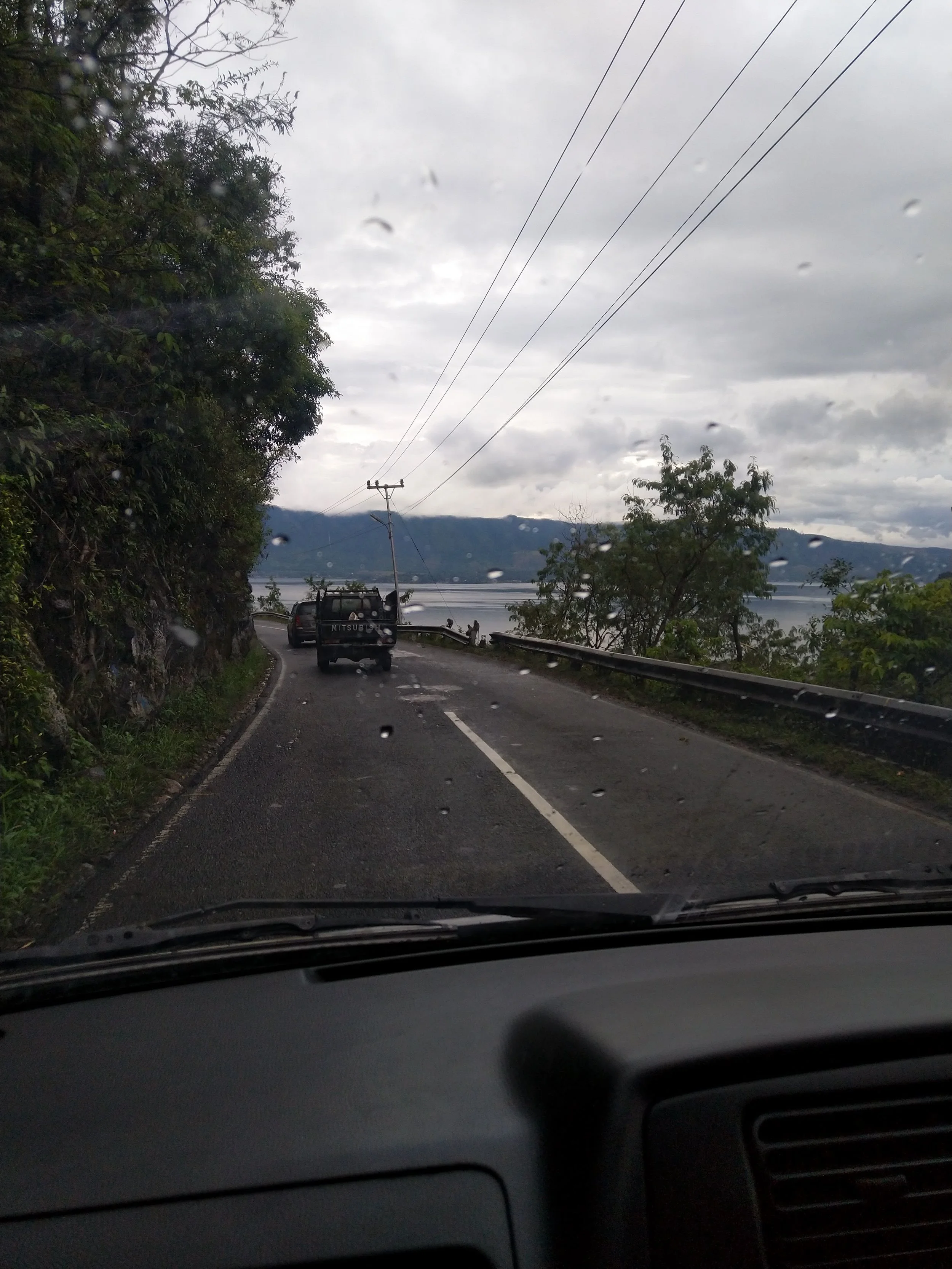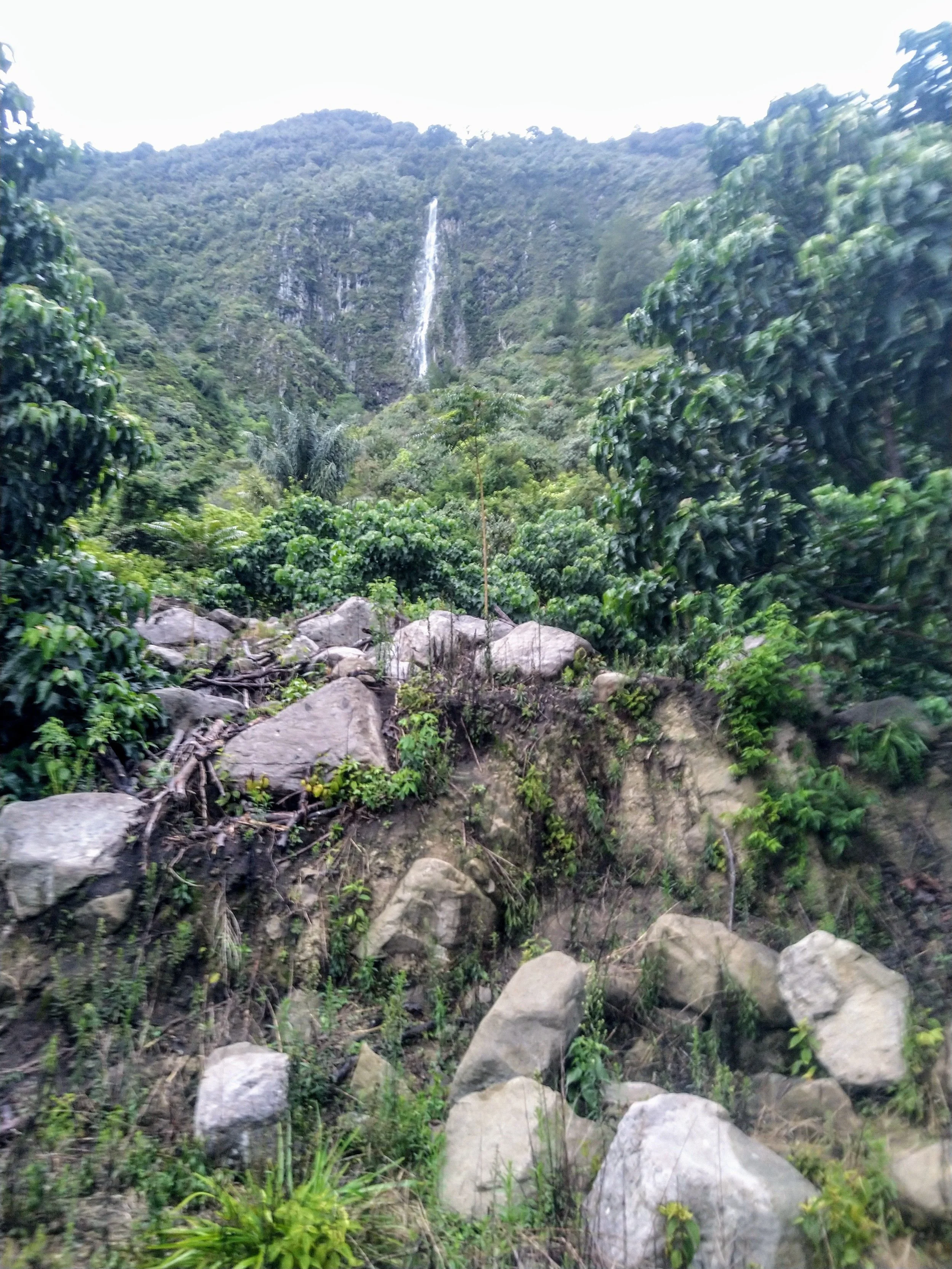Lake Toba: Swimming in a Supervolcano
After scouring Skyscanner for over a month without any specific destination in mind, I managed to snag a discounted return ticket to Jakarta, on Jet Airways for a mere USD180. The incredibly cheap airfare enabled me to use the megalopolis as a base as I set off to explore a new island on this ocean spanning archipelago nation. A ten hour layover gave me an opportunity to experience Singapore’s Changi airport.
Delving beyond Java, I ventured to explore the Lake Toba region in North Sumatra. This volcanic caldera was carved out by a climate changing super-volcanic eruption some 70,000 years ago, with the mythical Samosir Island rising in the middle of the lake as a result.
Medan is the nearest major city to the Lake Toba region and involves a two hour flight over the equator from Jakarta. Alternatively, one can fly into the newly inaugurated Silangit airport, which is significantly closer. I decided to the experience both airports, booking my return flight via Silangit.
Though not the most exciting Indonesian city, I spent a night in Medan, having heard a great deal about the exotic cuisine of the city. The slick, modern Medan airport is connected with the city via an airport express train, evading the rush hour traffic of the city. Having arrived at the onset of the monsoon season, I was greeted with a downpour.
Moneychangers on Samosir Island offer you a miserable exchange rate. Furthermore, most hotels and restaurants only accept cash on the island, so it advisable to change foreign currency to Indonesian Rupiah in a major city before proceeding. Travelling via Medan grants you an option to split a cab with other travellers. I paid 10 USD for a relatively comfortable six hour journey.
Sharing a minivan with a stoic group of German travellers, I set off toward Parapat, a small lakeshore town that is the primary transit point to Samosir Island, precariously circumventing oncoming traffic along the serpentine two lane highways of North Sumatra.
As we inched into the Christian dominated Batak tribal region, minarets gave way to wooden steeples. Halal restaurants were replaced by slaughtered pigs dangling languorously on wooden stakes by the roadside. The dusty streets of Medan gave way to lush forests. Nearing Parapat, I found myself descending into a dream, with cumulous clouds forming an ephemeral shroud, until the ancient volcanic caldera lake revealed itself. The sheer vastness of the lake gives you a faint idea of the cataclysmic, eruption that caused it.
Boarding a ferry at Parapat, I found myself wafting towards this Elysian isle. The verdant, mist-wreathed hills of Samosir Island appeared antediluvian in the distance.
Opting for a guesthouse set on the shores of Lake Toba presents you with the one-of-a-kind experience of checking-in via the property’s attached jetty. A cloudburst marked the premature onset of the rainy season, coinciding with my arrival, as the gloaming painted a faint outline of this mythical island. After a friendly reception at Gokon Guest House, I proceeded to explore the sinuous streets of Tuk Tuk, the backpacker part of the island. Exotic fragrances emanating from the indigenous flora induced an olfactory overload, heightening the strange and otherworldly aura of the place. After supper, I found myself drifting off to sleep under the silent, starlit sky.
Come daybreak, I could not resist the temptation of swimming in the lake, despite nursing a slight cold and fever thanks to lowered immunity over multiple flights and long layovers. Being my first fresh water open water swim, I was astonished to feel no stinging in my eyes, despite swimming without goggles. Moving beyond the weedy lakeshore area, it felt incredible to be swimming in the remnants of one of the most violent volcanic eruptions in geological history.
After a forty-five minute swim in the lake, I devoured a large stack of surprisingly delicious pancakes and avocado toast. Situated on the banana pancake trail, Lake Toba and Samosir Island were popular destinations for backpackers during the sixties and seventies. That legacy can still be felt today, courtesy the easy availability of quality western-style comfort food.
Renting a Polygon mountain bike, I proceeded to explore the roads and trails around and beyond Tuk Tuk, up to the nearby town of Tomok. I was fortunate to have a bike setup tweaked to my preference, enabling effortless ascents. Circumnavigating the lakeshore roads, I gradually found myself drifting toward the interior of the island, spying a waterfall in the distance. The quest to get closer took me off-road through a fairly rocky path ascending through lush jungle. Parking my bike against the trunk of a tree, I continued to traverse rocky terrain on foot, until I reached what seemed to be a cul-de-sac. With a sudden downpour and nightfall imminent, I decided to abort the mission. Drenched, I headed back to my guesthouse to witness a spectacle, as streaks of lightning lit up the lake against the backdrop of a starless sky.
Despite the less than salubrious weather, I found myself getting drawn into the island to the point where I decided to forfeit my return flight to Jakarta and stay on. Going by the friendly and hospitable nature of the inhabitants of the island, it is hard to imagine that the Batak tribe were once fierce warriors, practicing cannibalism. Nowadays, most have converted to Christianity, though they still hold on to their ancient beliefs. Traditional tribal motifs across the island evoke their warrior heritage.
With a limited time on the island and substantial distance to cover, I decided to hire a scooter for the next two days. The islanders are extremely courteous and civilised in terms of road sense. Making your way on a motorised vehicle is relatively stress free. Advancing beyond the neighbouring town of Tomok, I found myself scaling a precipitous incline all the way up a mountain on this island on an island. Just around a hairpin bend, the ebullient sound and spectacle of a gushing waterfall surprised me. Upon reaching the top, I found myself scurrying to a small coffee shop to escape a sudden torrent of rain until favourable conditions prevailed again. After climbing and descending several steep mountain slopes, I found myself meandering into a traditional Batak village. Given the fact that these villages are well off the grid, schoolchildren as well as elder villagers were thoroughly fascinated to meet the rare traveller passing through. I got friendly shouts of Horas (a traditional Batak greeting), on more than a couple of occasions. Despite the language barrier, the inhabitants of these distant reaches of the island came across as extremely warm and welcoming.
In the afternoon, men perched themselves languorously on wooden benches in coffee shops, sipping on local toddy whilst women huddled together outside their homes and children made their way back from school.
The landscape is ever changing: ranging from coffee plantations and terraced rice paddies to the Sumatran pine forests at higher elevations. Endless cups of Java powered me through the trot. I found myself dawdling over my coffee as I took in the magnificent panoramas of the lake afforded by these cliff hanging coffee shops.
In the evening, I got acquainted with my guesthouse neighbours from Belgium. Interesting conversations with fellow transients is the best part of travel.
The following day, I met up with an American screenwriter and former sailor, at breakfast. His narration of an incident of being mugged at gunpoint in Panama City, made crime in southeast Asia seem innocuous in comparison.
Setting off to explore the other side of the island, I stumbled upon an outdoor museum showcasing the traditional boat shaped houses, wooden sculptures and tribal totems along with craftsmen busy at work. I decided to hike ahead and explore the vast expanse beyond this outdoor museum. Making my way up a somewhat rocky incline, I found myself atop a hillock surrounded by traditional Batak graves painted a bright shade of pink. Descending the other side, I made my way through a dense coffee plantation in the stifling mid-day heat, eventually going up terraced land that that entailed scaling rocks and trees to ascend. My travails were not in vain. Upon reaching the pinnacle of this solitary trek, I was rewarded with a stunning vista of lush green plains and hills in the distance.
I spent the remainder of the day wandering along the mountain roads until a late afternoon shower caught me by surprise and I found myself riding down the precipitous slopes through a deluge.
On my final morning I reluctantly boarded the first ferry to Parapat, nearly missing it as I daydreamed in my ephemeral abode by the lake. The misty, verdurous hills of Samosir receded into the background and I found myself back in the real world. The two hour drive to Silangit airport took me through sylvan Sumatran pine forests, gentle hills and dusty towns. Despite being an extremely small airport, the facilities were extremely well maintained, with the friendliest airport staff I have ever come across. Flying out of Silangit Airport gave me an aerial glimpse of the immense lake. The sheer vastness of the lake left me spellbound as I made my way back to the bustle of Jakarta.
I wistfully looked on as the extensive lake shrunk to the size of a pond. Despite being so far off the grid, I was amazed by the decorous denizens that inhabit this empyrean isle, making me reevaluate my own notions of what makes a society truly civilized.















































